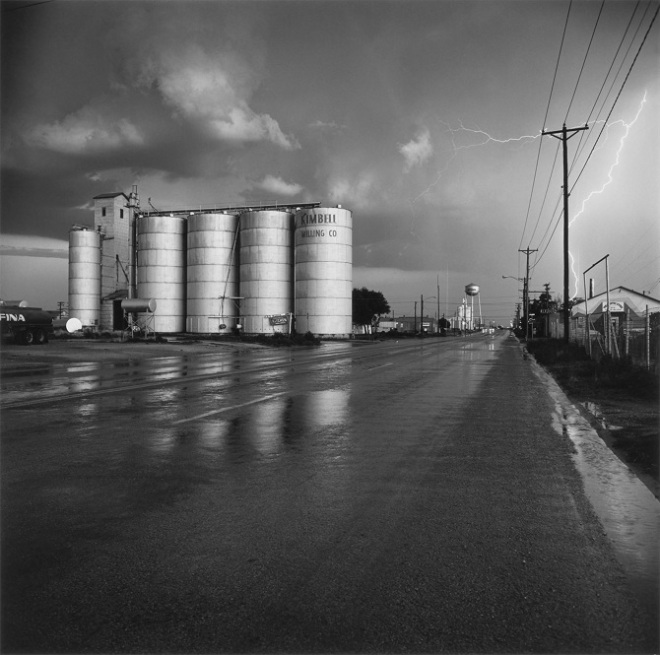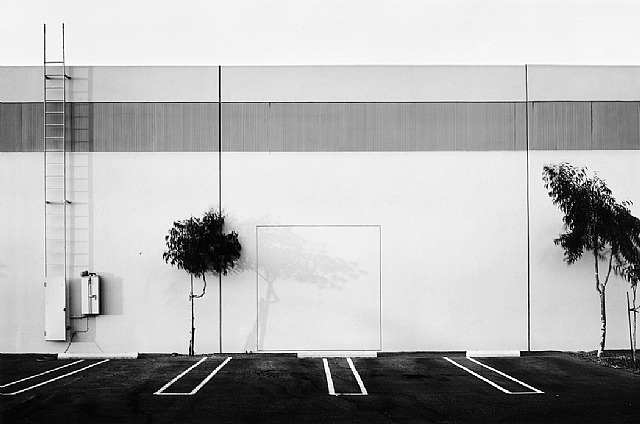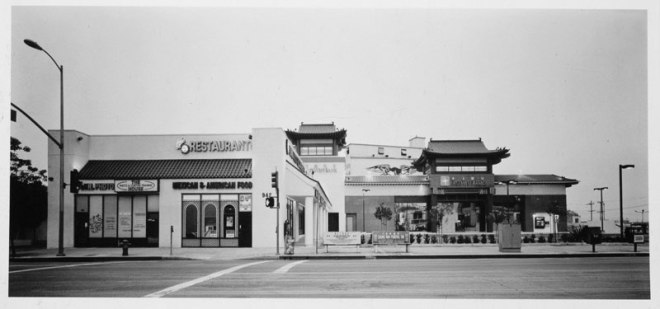In 1975 an important exhibition called ‘New Topographics: Photographs of a Man-Altered Landscape’ appeared. In retrospective art criticism, this exhibition is ascribed as initiating a turning point in the history of photography, particularly as it was in some ways the antithesis of traditional portrayals of landscape. Photographers Robert Adams, Stephen Shore, Lewis Baltz and Frank Gohlke were commissioned to reimagine ‘the genres of topographical and architectural photography with the implications of contemporary urban generation and the ecological consequences of industry’. (Cotton, P.83). In some ways the most significant aspect of the exhibition was that these social and political agents were for the first time considered on the art gallery wall. Within this context ‘what at the time were seen as individual styles” were abandoned in favour of a detached objective style, somewhat similar in style to John Davies (see previous post) but greater in their rejection of the idealised interpretation of landscape.
At the time the exhibition was not well received by an audience that was used to the traditional landscape photography of the time. The exhibition presented 168 black and white prints of suburbia, industrial warehouses, city centres, wastelands and even seemingly banal car parks. I have selected a couple of photographs (see below) by Frank Gohlke and Lewis Baltz that are good examples of the artists presenting the aesthetic beauty of the banal, whilst revealing interesting narratives below the strict formalism in each photo. While the ‘New Topographics’ was disparaged at the time, it was crucial in opening up new opportunities for later artists. A good example of this Catherine Opie who published series called ‘Masterplan’ and ‘Mini-malls’, the inspiration for which she attributes back to the original 1975 exhibition while crafting her own interpretation of the suburbanised landscape. An example of her work is posted below as is an interesting video I came across online in which she talks about the representation of the ‘Man-Altered Landscape’ in photography.

Frank Gohlke; Grain Elevator and Lightning Flash, Lamesa, Texas; 1975; Gelatin silver print, 1996; Amon Carter Museum, Fort Worth, Texas
 Lewis Baltz; The New Industrial Parks near Irvine, Element No. 5; California, 1977
Lewis Baltz; The New Industrial Parks near Irvine, Element No. 5; California, 1977
 Catherine Opie; Untitled #2 from ‘Mini Mall’ series; Iris Print, 1997
Catherine Opie; Untitled #2 from ‘Mini Mall’ series; Iris Print, 1997
The link to the interview with Catherine Opie can be found here.
The ‘New Topographics’ was certainly a revolutionary exhibit at the time, and it’s influence on practising artist up to the present day is clear to see. The idea of finding beauty in the banal and challenging the audience to look closely for historical narrative is something that will inform research for the final assignment. Depth and experimenting with formalised composition is something that I will be challenging myself to practice in an observational approach.
References:
Charlotte Cotton; The Photograph as Contemporary Art; Thames and Hudson, United Kingdom 2004; New edition
Catherine Opie; Catherine Opie on New Topographics; Los Angeles County Museum of Art 2009; Youtube video